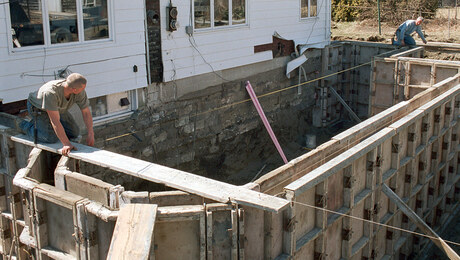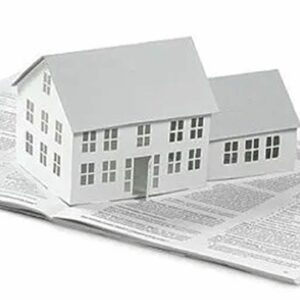Hi All,
Last night I looked at a potential baement remodel. Unlike many houses built here in the 20’s, this one has some headroom — about 7′. The problem is the floor. It’s concrete, but it is waaaaay wavy. There are no cracks, but it looks like someone poured concrete over a lumpy yard and managed to follow every little contour. Any ideas on straightening this out? I have a couple, but am throwing this out there to see what else comes up. There is a difference of almost 2 inches between some of the high spots and the low spots. About 720 s.f.
Here are my thoughts,
1. Pour a new slab over the existing and level it out. If I do this, is 2 in. thickness over the high spots enough (that would give me 4 thick over the low spots). This is just a floor so no real load of any kind. The down side is concrete would be probably the most expensive option.
2. Try to frame is some sleepers. Might be cheaper material-wise, but I would not like to think of the kind of scribing/smimming necessary to make this work.
3. Floor leveler. It seems that this floor is too uneven for floor levelr to really work. I would be using yards of the stuff.
Any other ideas?
It’s Seattle so I have to keep an eye on potential moisture probs too. I will check with a waterproofing contractor before I go too far on this. The current owners are new. They has some water in there early on but since they re-directed the downspouts claim to have had no more problems.
Thanks,
Brad


















Replies
Concrete maybe the fastest way to level.
Question-- is the HO truly wanting a level floor? or would a good indoor outdoor carpet work? Just a thought.
"Sir, if you were my husband I would poison your tea"
"Madam, if I were your husband I would drink it." Sir Winston Churchhill
I thought about carpet, but I am a little concerned about trapping moisture. I thought that with new concrete maybe it would be possible to put a vapor barrier between the old floor and the new pour so that water could not work its way up into the room. (This is Seattle so the ground is always wet). Can a new slab "float" on top of the old with some sort of VB in between or is it better/necessary to have the new bonded to the old?Brad
If you use self-leveler you don't need 2 inches over the high spots. 1/4 inch is fine, and you can pour pea gravel in the low spots so that you don't use as much leveler. Make sure the concrete is clean (no cutback adhesive or oil) and you need to use the primer that is spec'd for the leveler. 720 square feet will be expensive for materials but it will be fast -- low labor cost.
Alternatively you can float a mud floor and bond it to the slab with thinset. This is cheap for materials and expensive for labor.
You may need expansion joints with either approach, definitely at the perimeter.
You can also get a quote from self-leveling company that will pump the leveler in through a window. Just pass on the cost & avoid the hassle, giving the homewoner the option of deciding whether he really wants a level floor. In a basement I suggest you use a portland cement based leveler rather than gypsum based.
Billy
Would a leveler be likely to crack or break if it is only 1/4" thick? I have a mental image of the leveler being thin is spots and then cracking and flaking up. That's why I was thinking more of a new concrete pour with rebar/mesh/fibers/whatever to help hold it together. Definitely an expansion joint at the perimeter. My only experience with floor leveler is in smaller rooms where you are just floating out some minor imperfections for new tile or vinyl or whatever. This seems like a lot of area for floor leveler.I was also thinking of the idea of just hiring a crew to pump it in through the window and use the same lightweight stuff that they use to pour over radiant heat tubes on a wood subfloor. I think that stuff in generally only 1 1/2" or so thick. That would cover the high spots and float out the low spots, but I'm not sure if that is any cheaper than a regular concrete pour.brad.
It is a lot of area for a floor leveler, but it is not unusual. It just means that the material cost is expensive at $25-30 per bag. But the pour will be finished in 1-2 hours so the labor is less.
The leveler is made to go to featheredge thickness:http://www.custombuildingproducts.com/ProductCatalog/SurfacePrep/SelfLevelingUnderlayments/?user=pro&lang=en
Frequently a gypsum-based product is used in radiant heat systems. This is not such a great solution in a high moisture situation such as a below grade slab in Seattle.
if you want to talk with people who have lots of experience using self-levelers, you might check here:http://johnbridge.com/vbulletin/index.php
Specific advice on self-levelers is here:http://johnbridge.com/vbulletin/showthread.php?t=1807
They can discuss bonding to the slab, no bonding, etc. If the slab has no cracks then I would bond to the slab.
Billy
thanks for the links. i'll be checking them out.